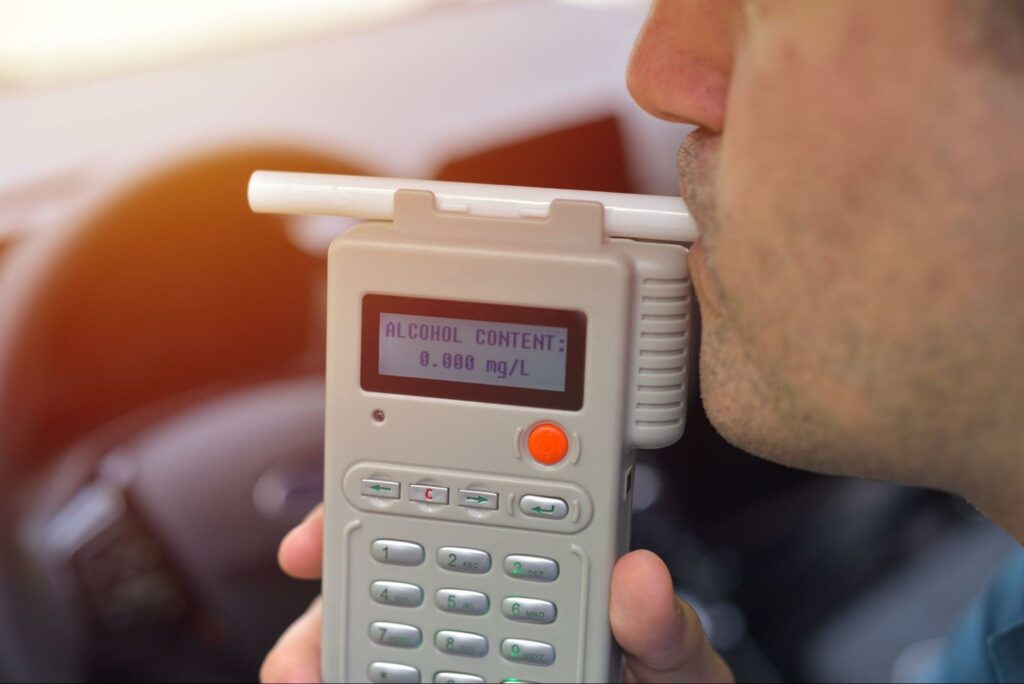
An ignition interlock device is a powerful tool to help keep drunk drivers off the road, but some people try to manipulate the system. The thing is, the program and the device is a lot smarter than people think.
If you get caught trying to “trick” the system, it could ruin your chances of getting your license back. And after all that work that went into obtaining a restricted license after a license revocation, that’s the last thing you want.
Following the rules is your best bet, and it’s really not all that hard to do.
What is an Ignition Interlock Device?
An ignition interlock device is a breath test device that is connected to a vehicle’s ignition. It won’t start unless the individual blows into the interlock and has a blood-alcohol level below a preset limit.
Generally, you’re not allowed to drink at all, but the preset limit is usually .025 to allow for the consumption of certain foods, the consumption of alcohol at religious events, or the use of mouthwash. If the breath test registers higher than that, the driver would have to wait 15 minutes before trying again. The car will not start until the driver’s BAC is below the preset limit.
However, you should avoid sipping alcohol at all, even at religious events, to avoid this problem or the appearance of drinking and driving.
The device will also activate occasionally as the individual is driving, requiring another breath test to ensure he or she didn’t drink along the way. These are known as rolling tests, and they must be completed in time or the car will stop running.
When Is It Required?
Use of an interlock device is usually required when someone whose license has been revoked after a DUI applies for a restricted license. Under the terms of that restricted license, he or she would have to use the interlock for several months, usually six months. If the driver successfully follows the rules, there is a better chance of obtaining a full license after the restricted license period is over.

Use of an interlock device would also be required in most “super drunk” cases, which means the driver’s blood-alcohol level had been 0.17 or higher at the time of the arrest. In this case, the driver’s license would be suspended for one year, even after a first DUI. The device would then be installed after 45 days of the suspension and would remain in the vehicle until the suspension period is over.
What is an Interlock Violation?
If a court says you have to use an ignition interlock device, you have to do it. If the court is notified about an interlock violation, your license revocation will be automatically reinstated. That’s a must according to the Michigan Secretary of State’s Office of Hearings and Administrative Oversight, with only a few possible exceptions in rare circumstances.
So what constitutes an interlock violation? Following are a few examples and scenarios that could get you into trouble all over again.
- Trying to get someone else to blow into the device for you. (Most of the devices have cameras, so it’s clear who is blowing into them. The rolling retest is another way to ensure the same person is blowing into the device.)
- Tampering with the device to disconnect or disable it
- Failing to blow into the device in time during a rolling retest
- Having a blood-alcohol level above the preset limit
Contact Me for More Information
According to the Centers for Disease Control & Prevention, ignition interlocks reduce repeat DUI offenses by about 70 percent while they are installed.
They are clearly effective when used properly. Proper use of the device also shows the court that you are serious about maintaining your sobriety, which may reflect positively on your attempt to get your full driving privileges back.
For more information about what constitutes an interlock violation or if you feel that you were treated unfairly regarding your use of the device, contact me for a free consultation.

